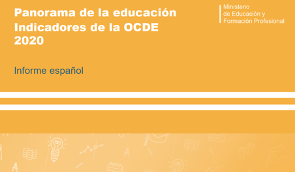What data does the "OECD Education at Glance 2020" leave us?
Every year the Ministry of Education and Vocational Training publishes a report from the “OECD Education at Glance”. In its 2020 edition, the report leaves us some interesting data:
- Between 2012 and 2017, spending on education with public funds has been reduced by 3.1 percentage points in Spain, in turn the average number of students per classroom has increased.
- According to the OECD, the education that girls and boys receive in their early childhood has positive effects to combat inequality and improve social inclusion; And speaking of childhood, do all girls and boys attend school in Spain? Practically yes. The enrollment rate in the second cycle of early childhood education is higher than 96%. However, the rate decreases by almost 3% in the second stage of secondary education, that is, among the population between 15 and 19 years of age.
- Gender disparity can also be observed in tertiary education. Between 2009 and 2019, at the OECD level, the gender disparity in the fields of study has increased, that is, there is an under-representation of women in the fields of Science, Technology, Engineering and Mathematics (STEM, for its acronym in English); however, they predominate in the fields of health and care. Not only gender influences the academic trajectories and expectations of the student body, but also socioeconomic status.
- And what about bullying? Spain, very positively, has one of the lowest bullying rates; However, there are still young people who have been victims of bullying, which can negatively influence their learning and increases the risk of dropping out of school.

Continue reading here.
